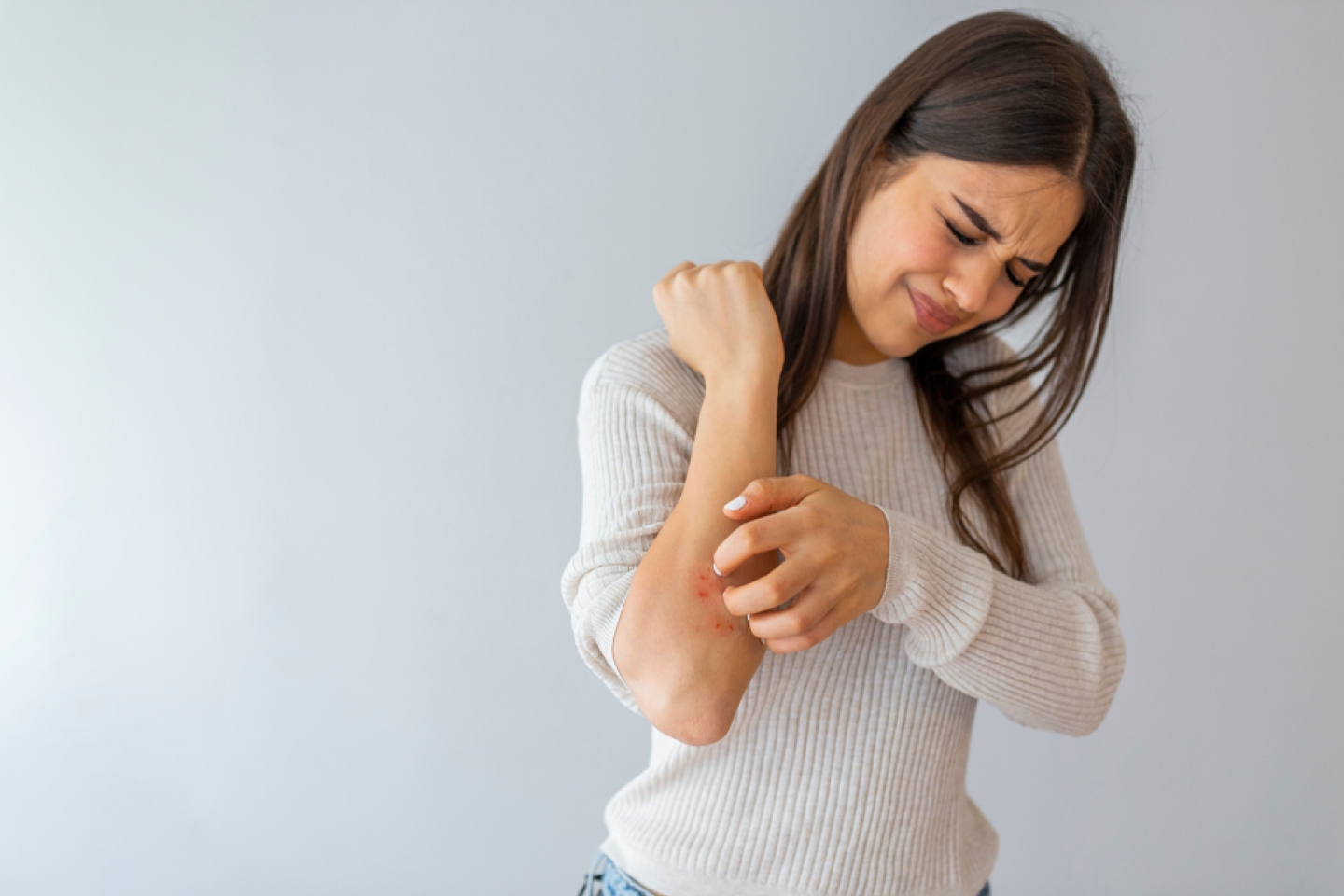
Psoriasis is a chronic inflammatory condition characterized by scaly plaques—raised patches of skin that may be itchy and painful. Affected areas include the scalp, elbows, knees, belly button and buttocks. The disease can also affect the nails and joints.
Many patients with psoriasis respond well to topical treatments. But if uncontrolled, it can be associated with increased risk for cardiovascular disease, type 2 diabetes and mental health disorders.
The disease typically occurs in adults between 20 and 30 years old, with another peak between 50 and 60. It equally affects men and women of every race and ethnicity.
Psoriasis can range from mild to severe, but whatever its level of severity, it is not contagious.
Plaque psoriasis, the most common type of psoriasis, is characterized by plaques with well-defined borders. On lighter skin, the plaques are pink or red with silvery scales, while on darker skins they appear hyperpigmented or purplish. Plaque psoriasis can appear anywhere on the body, but according to the National Psoriasis Foundation, it is most commonly seen on the trunk, knees or elbows.
Asked to weigh in on other types of psoriasis, Dr. Jeanyoung Kim, assistant professor of clinical dermatology at Weill Cornell Medicine and assistant attending dermatologist at NewYork-Presbyterian Hospital, lists them as follows:
About one out of three people who have psoriasis will go on to develop psoriatic arthritis (PsA), an inflammatory disease of the joints. Often, PsA starts about 10 years after the onset of psoriasis. It can progress slowly or rapidly, and its symptoms range from mild to severe.
The National Psoriasis Foundation’s list of common PsA symptoms includes:
In its later stages, the disease can lead to extensive joint damage and even deformity, which is why early diagnosis and treatment are so important.
If you suspect you or a loved one may have PsA, consult a rheumatologist—a doctor who specializes in the diagnosis and treatment of diseases of the joints, muscles and bones.
Psoriasis is an immune-mediated disease, in which our immune system misfires and attacks our skin cells. The mild version usually responds to over-the-counter or prescription topical medication. “For example, says Dr. Kim, “mild scalp psoriasis typically responds to widely available shampoos containing salicylic acid and coal tar.”
Phototherapy via regular exposure to UVB light at your dermatologist’s office reduces inflammation and improves itch and discomfort, she says. Phototherapy can also be extremely effective in treating larger areas of the body.
“It’s an exciting time for patients with moderate-to-severe psoriasis who have failed topicals and phototherapy”—namely, biologic agents that target the protein or proteins involved in the inflammatory response that drives psoriasis. These medications, usually administered by injection at home or intravenously at a doctor’s office, can also be effective for patients with PsA. Biologics can slow or even stop PsA from progressing, decrease pain, protect your joints and preserve your range of motion.
It’s easy to confuse the two conditions, but your dermatologist can usually tell the difference.
While psoriasis involves a dysfunctional immune response, eczema has more in common with allergies and asthma. The two diseases may sometimes look similar on the surface, but they respond to very different treatments.
Itching is a more common complaint in patients with eczema, whereas psoriasis usually causes soreness or pain.
And eczema often affects infants and children as well as young and older adults. While psoriasis is occasionally seen among children, it typically arises during adulthood.
Still, says Dr. Kim, “both psoriasis and eczema can cause a dry rash involving similar areas of the body. If you aren’t sure what’s happening with your skin, see a board-certified dermatologist for an evaluation.
“I think—and hope!—the stigma associated with psoriasis is improving, as there are more and more ways to treat the disease along with greater public awareness,” Dr. Kim says. “If you have psoriasis, the best way to counter negative attitudes is to be proactive about your care.
“This summer, I had a patient who felt self-conscious wearing a bathing suit due to her psoriasis,” she continues. “With proper treatment, she was able to feel more confident in her own skin and do the things she enjoyed most.”
Find a specialist at Weill Cornell by visiting our website at https://weillcornell.org/doctors